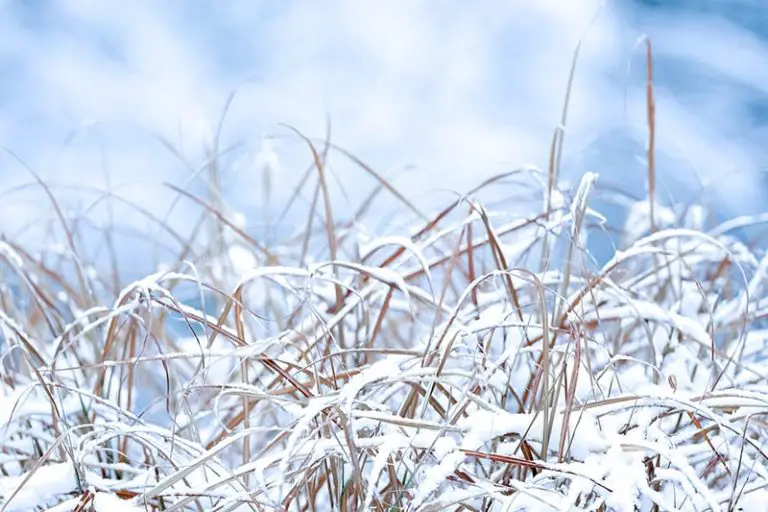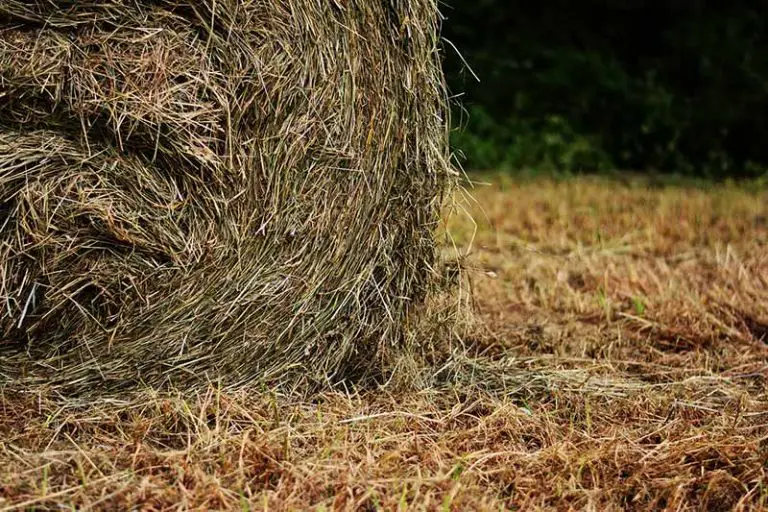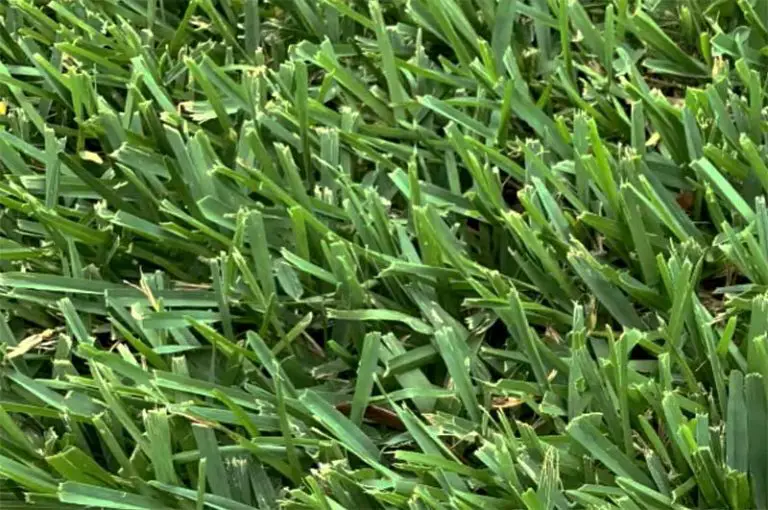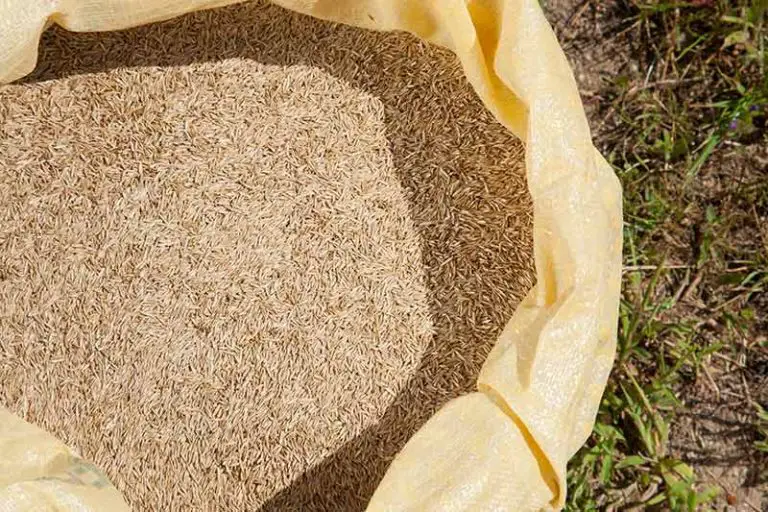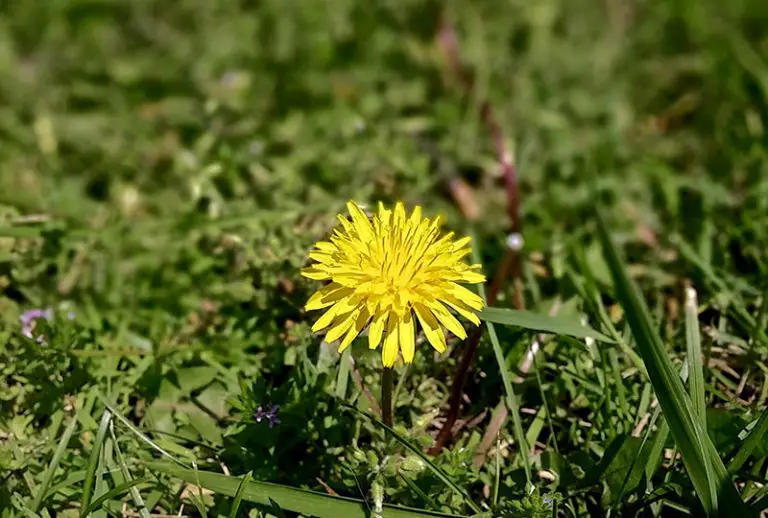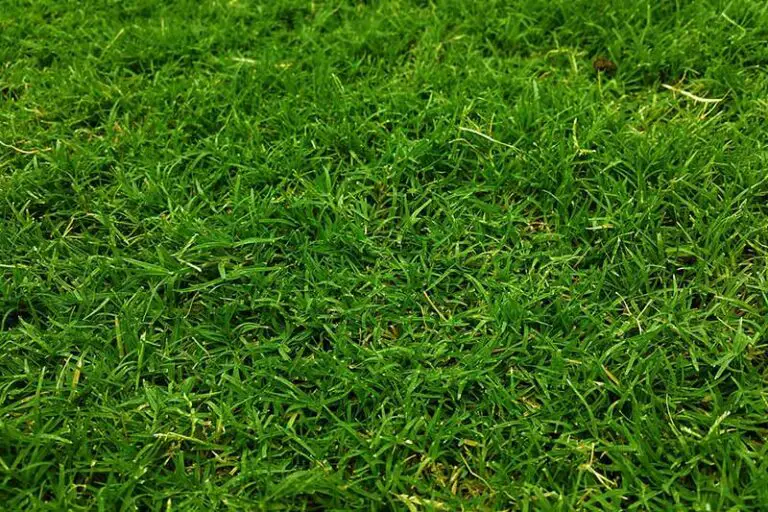Grass Identification Guide: What Type Of Grass Do I Have?
For too many homeowners, lawn care is dictated through a trial-and-error process. It can often feel frustrating when you’re trying to figure out the correct way to care for your lawn, and nothing seems to be working. To adequately care for your lawn, however, you’ll first need to identify the type of grass you have!
Grass is classified according to the climate it grows in, either being a warm or cool season grass. Considering your climate is the first step to narrowing down your grass type. The specific type can be found by observing the grass’s color, appearance, growth rate, and tolerance to different conditions.
For those trying to determine what type of grass they have, our identification guide will help you figure this out once and for all. First, we’ll take a look at the two main categories of grass types and tips for successfully identifying your relevant species. Once we’ve done this, we’ll break down the most common grass types!
Understanding Different Grass Types
When it comes down to identifying your grass, you first need to consider your climate. This will allow you to narrow the number of possible grasses, ultimately making it easier to identify your specific type of grass. This will come in handy when we outline the most common grass species.
Overall, there are two main categories of grass: cool-season and warm-season grasses. The type of grass you have will correspond to the climate in your region. However, you may also fall in a transition zone, where either type of grass may appear. Let’s take a look!
Cool-Season Grass
By considering your region’s climate, you’ll be able to figure out whether or not you have cool-season grass. If your region has hot summers and cold winters, then your grass will be a cool-season type. Regardless of how cold it gets, cool-season grasses will remain luscious; this is the best seed for those trying to keep their grass green over winter.
In the United States, cool-season grasses are the most prevalent in the northern half of the country. With cool-season grasses, lawns will thrive in spring and autumn, when temperatures are cool. The ideal growing temperature for cool-season grasses is between 65- and 80-degrees Fahrenheit.
Warm-Season Grass
Originating in tropical regions, warm-season grasses are those that thrive when temperatures are between 75- and 90-degrees Fahrenheit. Due to this, these grasses will be at their greenest during the summer. In the United States, the southern half of the country is most likely to have warm-season grasses.
During autumn and winter, however, warm-season grasses will generally go dormant until spring. This dormancy is even known to happen when temperatures exceed 90-degrees Fahrenheit. However, consistent watering can be used to combat this during the summer season.
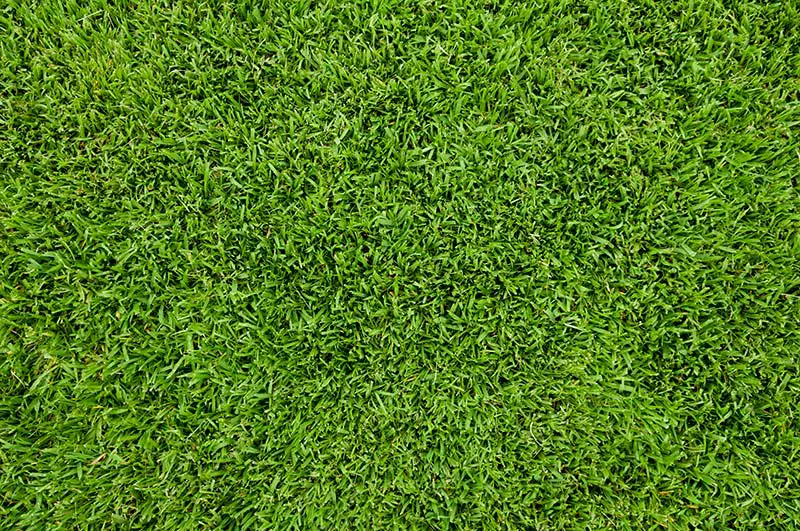
Transition-Zone Grass
As mentioned earlier, there are certain regions where both warm- and cool-season grasses are likely to develop. Generally, these areas are referred to as the transition zone, which is a region in the middle of the country. This region has the most variety in terms of grass types.
The following states form part of the transition zone in the United States: Arkansas, Kansas, Kentucky, Missouri, North Carolina, Northern Georgia, Northern Mississippi, Northern Texas. Oklahoma, South Carolina, Tennessee, and Virginia. If you reside in these states, you might have cool-season or warm-season grass.
Tips For Successful Grass Identification
Before we consider the specific types of cool-season and warm-season grasses, we’re going to give you a few tips to help you identify your grass!
Inspect The Color And Appearance Of The Grass
When identifying the type of grass that you have, you’ll want to pay careful attention to the color and appearance of your grass. This will come in handy when you’re identifying it using our guide. The color and size of your grass blades are critical determining factors.
You’ll also want to monitor how your grass is spread out. Different types of grass may even have different patterns or identifying features. By monitoring this, you’ll be able to accurately identify the type of grass you have.
Consider The Growth Rate Of The Grass
To accurately identify your type of grass, you’ll need to have a good understanding of the rate at which it grows. For example, do you know how frequently you need to mow your lawn? By observing how fast your grass grows, and when this takes place, you’ll be able to figure out which species of grass you have.
Of course, the rate at which your grass grows will fluctuate throughout the different seasons. It’s essential to take note of this, as it will allow you to better care for your lawn in the future. Ultimately, your grass’ growth rate in different seasons is an important indicator as to which type of grass you actually have.
Monitor The Tolerance Of The Grass
Like the above tip, this one takes a bit of time. That is, you’ll want to consider the overall tolerance of your grass in different conditions. In the same vein as monitoring when your grass is thriving and growing quickly, you’ll want to monitor when your grass does poorly.
Not only will this allow you to successfully identify your type of grass, but it will allow you to tailor your lawn care to your specific type of grass. When considering your lawn’s tolerance, you’ll want to monitor its performance in different temperatures, scorching and cold extremes. However, you’ll even want to consider how your lawn tolerates perpetual aspects like shade.
Identifying Cool-Season Grasses
If you suspect you have cool-season grass, it’s likely one of the following types. With the above-discussed tips in mind, you’ll be able to identify the specific type of cool-season grass that you have!
Creeping Bentgrass
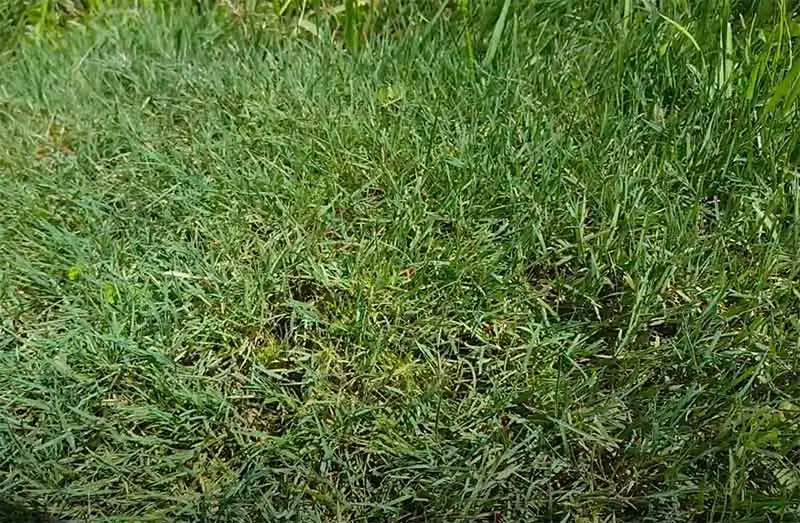
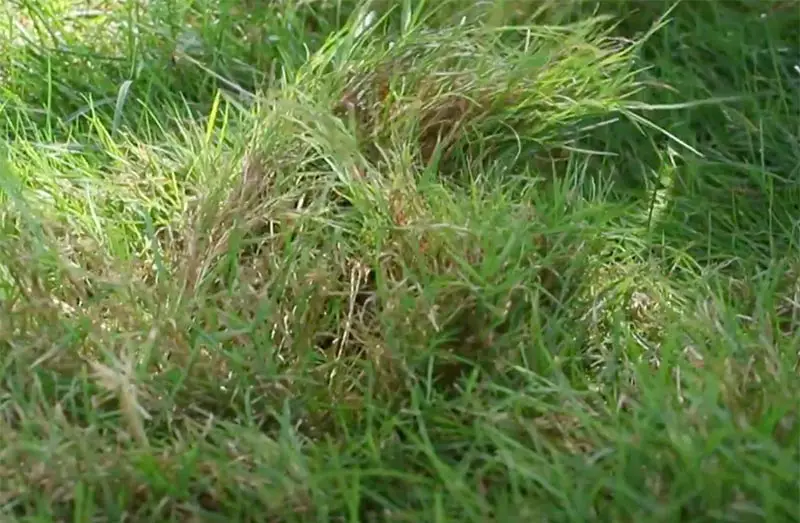
When it comes down to cool-season grasses, this is the most common type found on golf courses. This type of grass grows particularly well in coastal areas with high humidity levels. While this type of grass makes for great putting turf, it can often invade people’s lawn, growing alongside a different kind of grass.
This type of grass has light patches that can be anywhere from 6-inches to 2-feet in size. Creeping Bentgrass has a horizontal growth pattern and only develops a shallow root system. During the summer, this cool-season grass will turn brown.
Fine Fescue
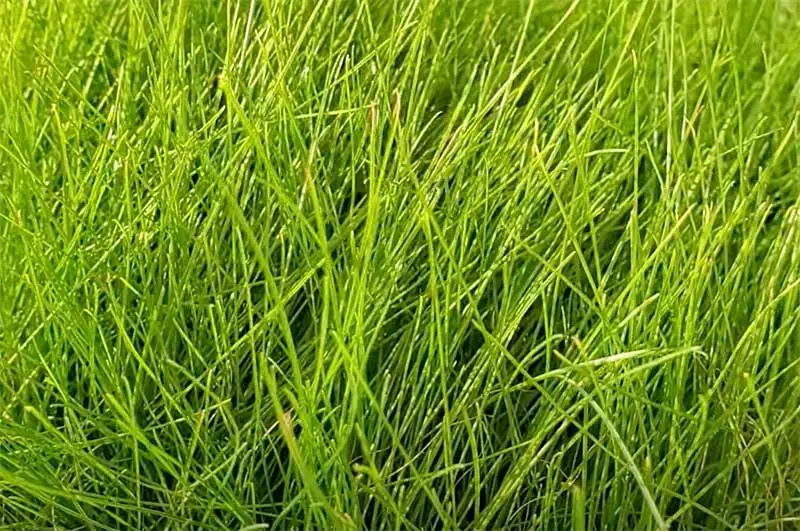
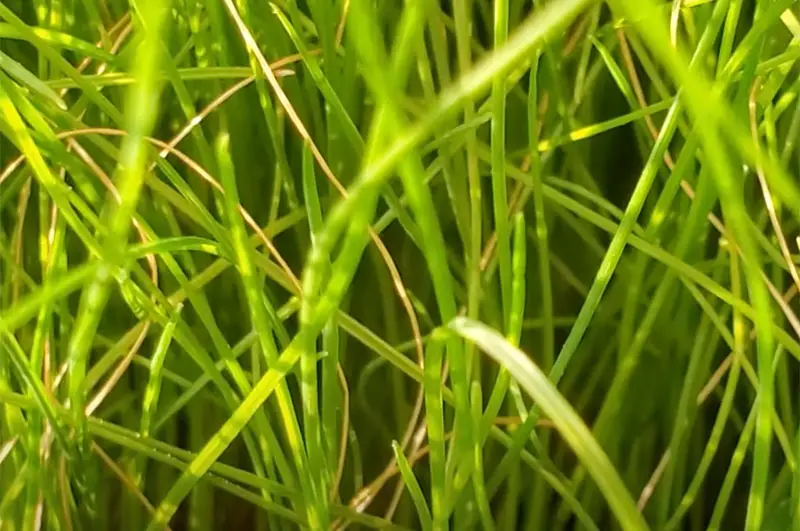
Fine Fescue is a versatile cool-season grass. This type of grass is known for growing at high altitudes and thrives when temperatures are moderate. Of all the different types of cool-season grasses, Fine Fescue is the one that is the most tolerant to shade.
Fine Fescue is characterized by fine, vertical grass blades that are a medium to dark shade of green. This type of grass is able to tolerate summer and winter climates and keeps its color throughout all the seasons. Another identifying characteristic is the slow initial growth rate of Fine Fescue.
Kentucky Bluegrass
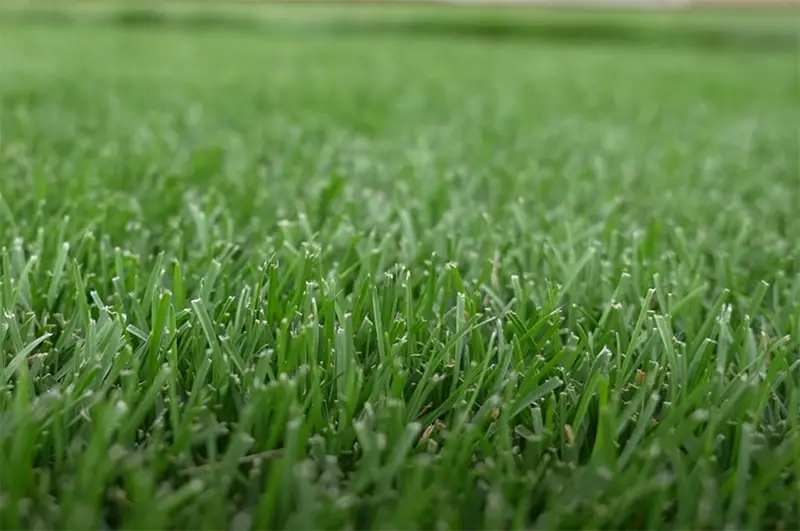
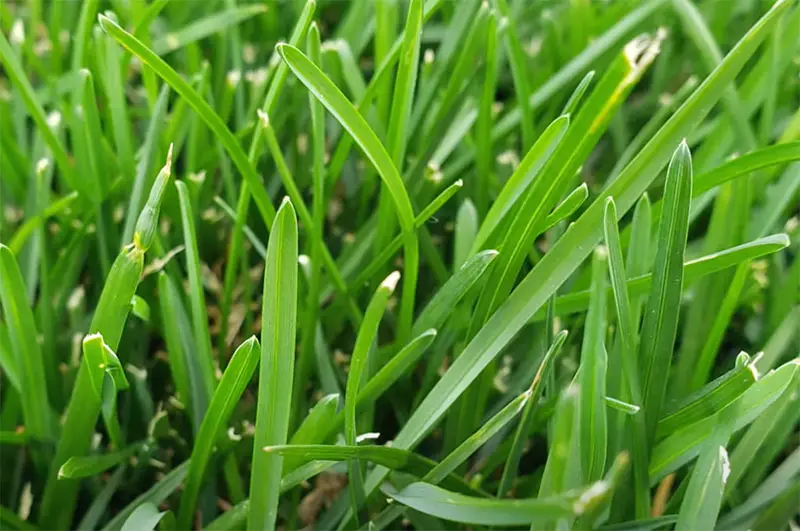
One of the most commonly found cool season grasses, Kentucky Bluegrass can be found across the United States. While this type of grass thrives in colder temperatures, it has a moderate tolerance to warmer weather. However, Kentucky Bluegrass will struggle to grow in shaded areas and during periods of drought.
This type of cool-season grass has medium-sized blades that have a dark green color. However, this color will be most prominent during late spring and can often last all year. With this type of grass, homeowners will note a high growth rate, which means more mowing and fertilizing!
Perennial Ryegrass
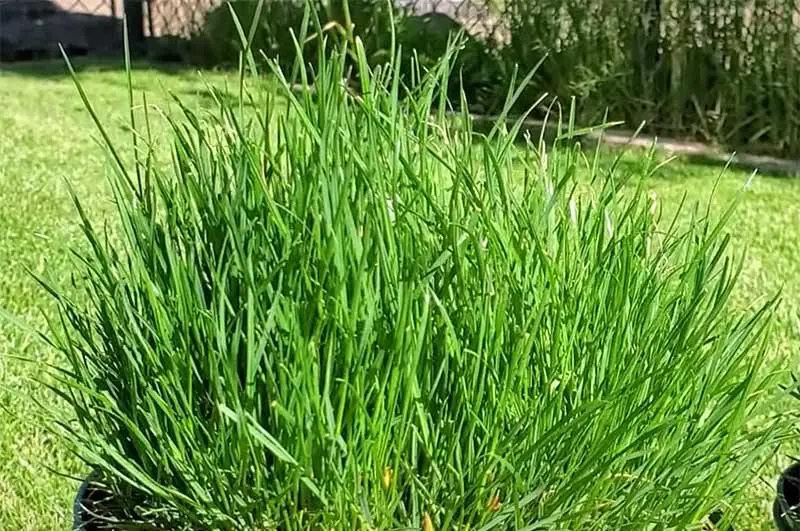
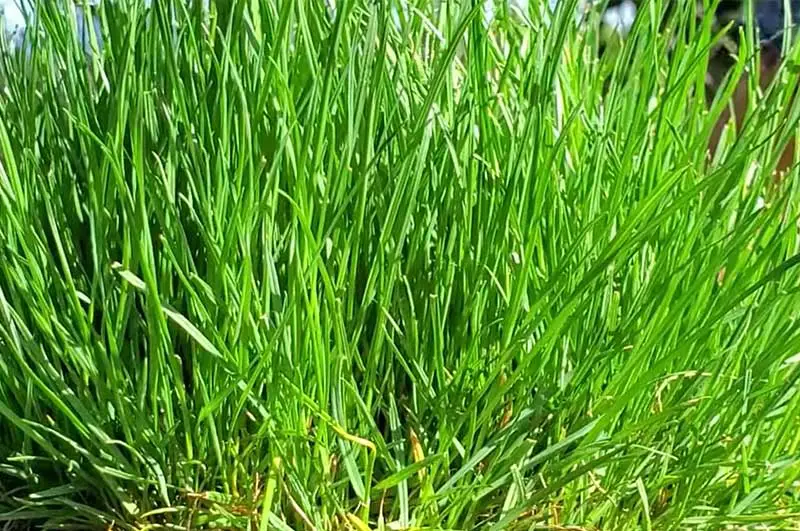
Another type of cool-season grass is perennial ryegrass. This type is suited to overseeding, whereby seeds are used to fill unwanted gaps in a lawn. For this reason, you’ll often find this type of grass growing alongside another cool-season grass. Its medium to dark shade of green allows it to blend in well.
Perennial ryegrass has tough leaf blades that are easier to maintain and make the grass more resistant. This type of grass grows quickly and handles foot traffic well. Unfortunately, Perennial Ryegrass struggles in temperature extremes. A drought would result in a period of dormancy.
Tall Fescue
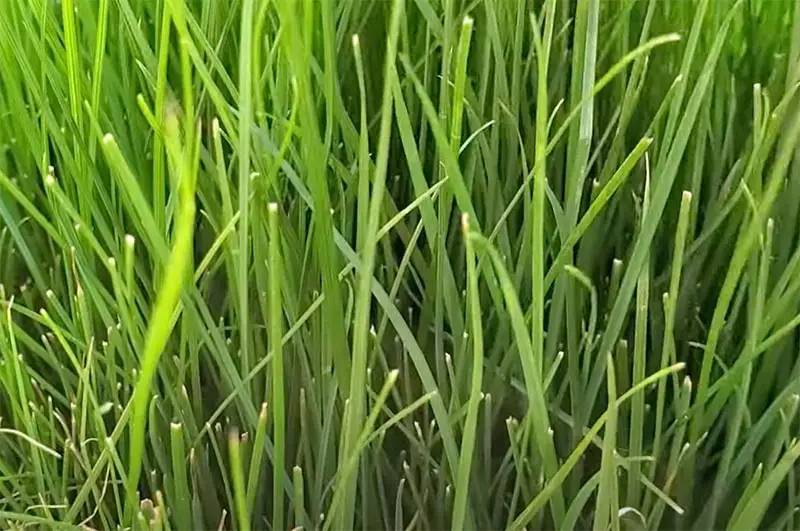
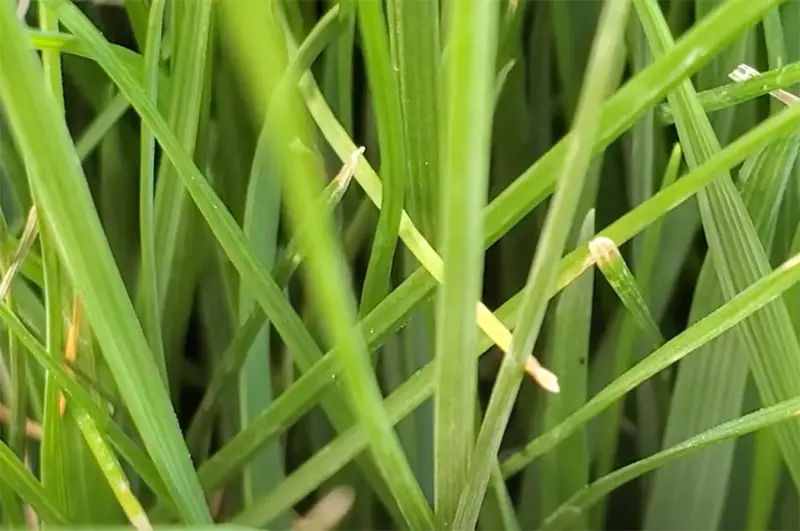
Tall fescue is a grass that is able to grow in a variety of different climates. Due to this adaptability, tall fescue is also commonly found in the transition zone. This type of cool-season grass requires less watering than other types due to its deep root system. This type of grass features medium blades that have a rich shade of green in spring.
As far as cool-season grasses go, tall fescue is considered the most tolerant. While this grass thrives in cool temperatures, it’s able to tolerate heat and drought better than others. The time you save watering this grass will likely be spent mowing due to the quick rate of growth. However, it should be noted that tall fescue doesn’t spread to fill bare spots as it is a bunch-forming grass.
Identifying Warm-Season Grasses
For those suspecting they have warm-season grass, it will likely be one of the following grasses. We’ll give you a breakdown of the most common types, which will allow you to properly identify which type of warm season grass you have!
Bahia Grass
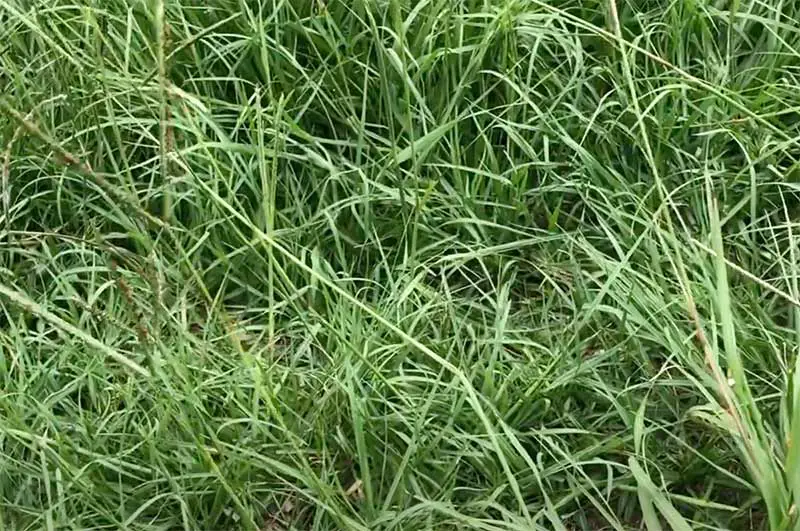
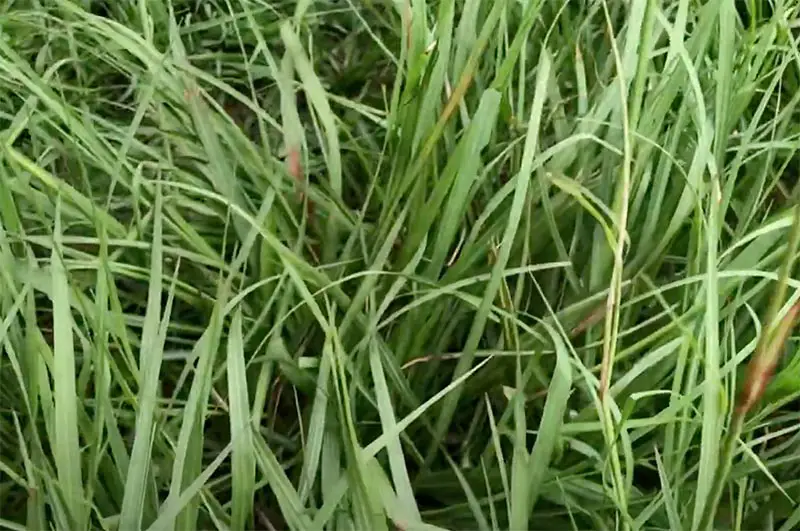
While Bahia grass isn’t the most aesthetic type, this grass is able to grow in poor conditions. This makes it a great grass type for those who are trying to cultivate a lawn in these adverse conditions. While Bahia grass is able to thrive in hot conditions, it is known to struggle in cold and shady conditions.
Bahiagrass is characterized by thin, pointed blades. This type of grass will retain its light to medium green color as long as its growing conditions remain optimal. Bahiagrass has a rapid growth rate. While this grass is growing, homeowners will notice seed stalks that are often taller than the blades of grass.
Bermuda Grass
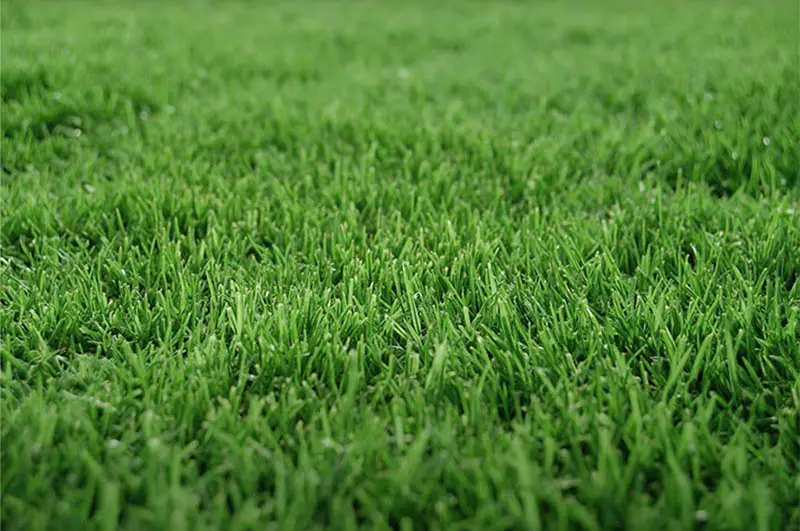
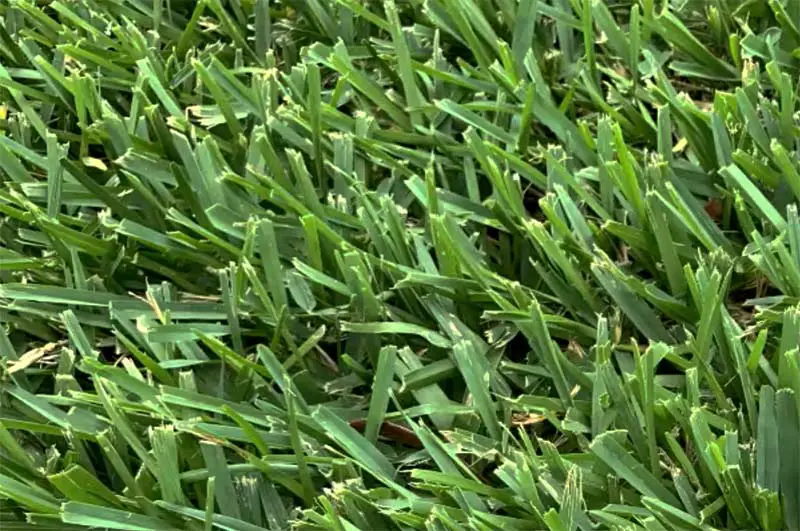
Bermuda grass can be identified by its dark green color. While this grass is commonly found in the southern half of the United States, it’s also commonly found in the transition zone. This grass will thrive in extreme heat and will withstand drought. However, during cold temperatures, Bermuda grass has a tendency to go dormant.
This warm-season grass is characterized by dark green, thin leaf blades. This type of grass will need to be mowed more frequently due to its rapid growth rate. Bermuda grass is known to be highly resistant to foot traffic. For those who frequently use their lawn (or have pets that do), this is a fantastic warm-season grass.
Carpet Grass
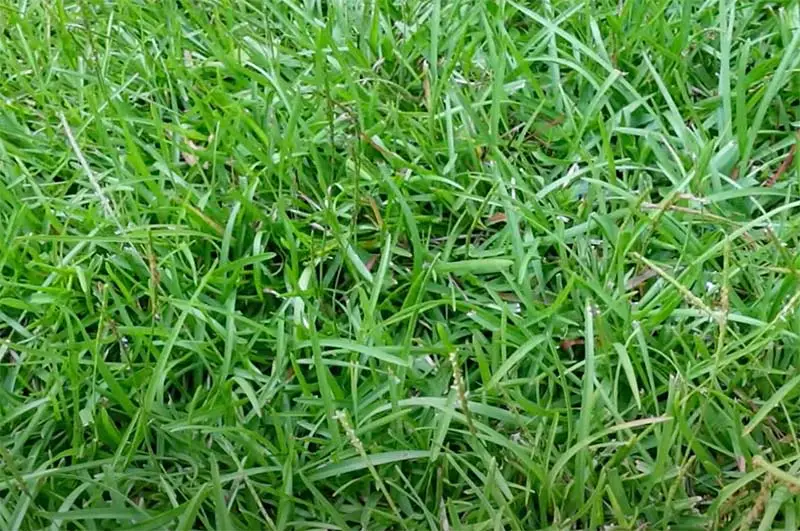
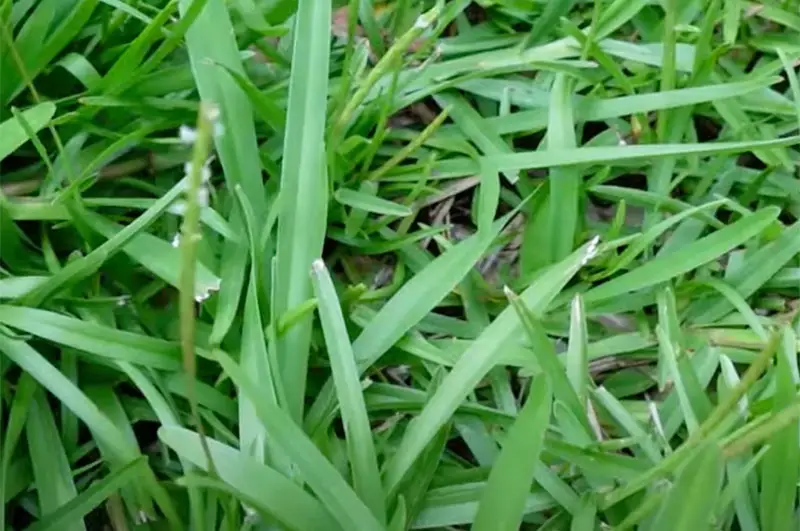
Carpet grass is a warm season grass commonly found in the southern half of the United States. This type of grass gets its name from its carpet-like appearance. Unfortunately, this grass is characterized by unappealing seed stems, which can grow rather tall and have a weed-like appearance.
As warm-season grass, Carpet grass thrives in extreme heat. Typically, this type of grass will have a pale green or even yellow-like color. The blades often have rounded tips. In terms of appearance, Carpet grass is often confused with Centipede grass, which is the next type we will be looking at!
Centipede Grass
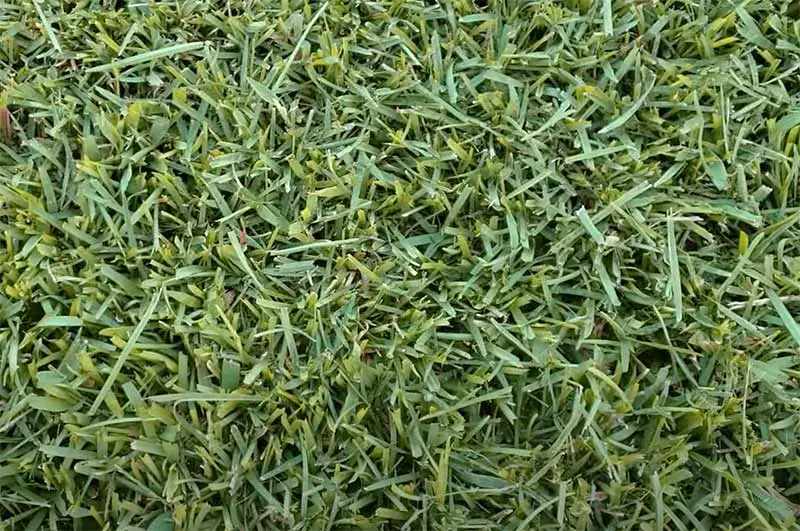
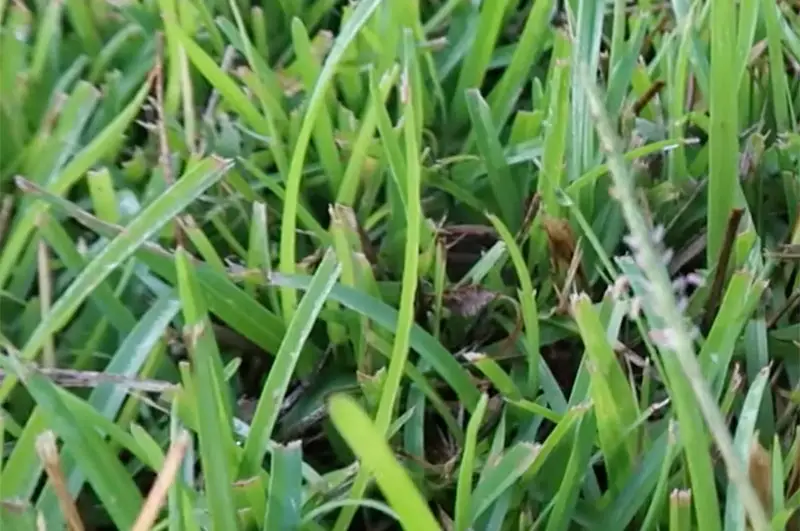
Centipede grass is commonly found in regions with hot and humid summers, particularly those with high levels of rainfall. For this reason, this warm-season grass is perfectly suited to humid tropical climates. While Centipede grass is able to withstand high temperatures, it requires sufficient irrigation.
This type of warm-season grass has a light to medium shade of green. Centipede grass grows at a slower pace than other grasses, making it harder for the grass to bounce back after damage. This grass will struggle to cope in extreme cold.
St. Augustine Grass
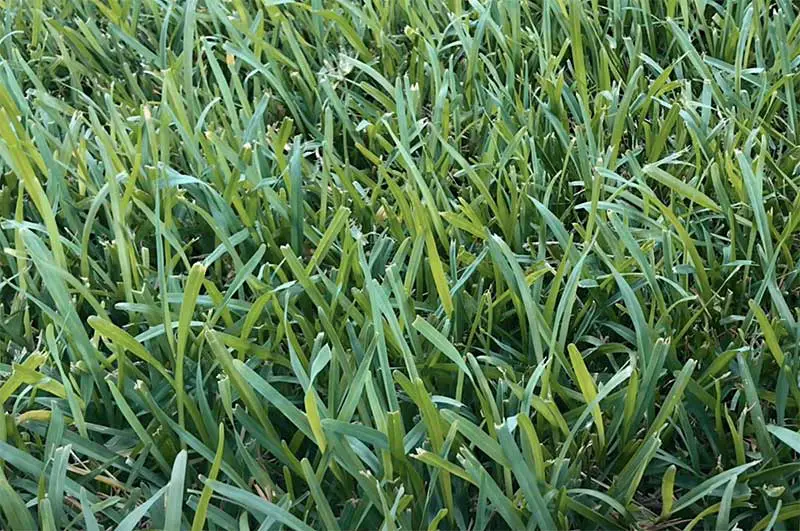
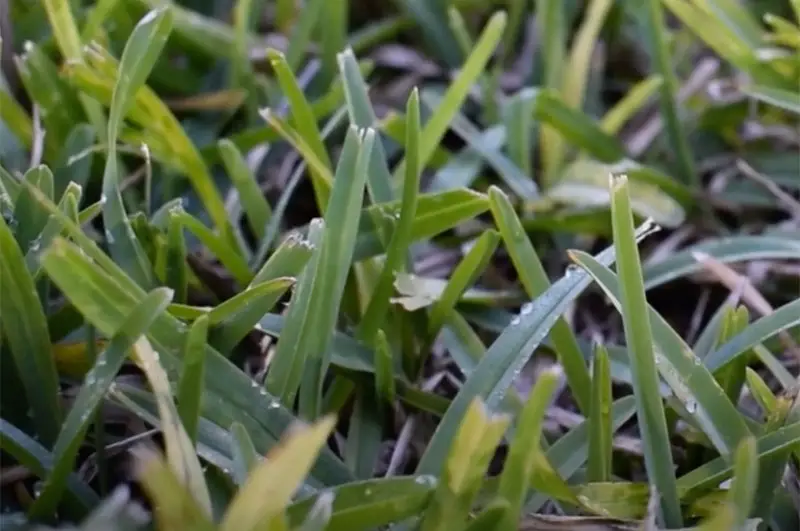
Like Centipede grass, which we discussed above, St. Augustine grass is well-suited to regions with warm climates and high levels of rainfall. The moisture produced by the humidity of these regions is essential to the growth of this grass. In cold temperatures, when there’s little moisture, St. Augustine grass will struggle to grow and will lose its color.
This warm-season grass has a light to medium shade of green, which is most prominent during warm weather. This grass has wide blades and will grow rapidly. While this grass struggles to tolerate foot traffic, it can still thrive in the shade.
Zoysia Grass
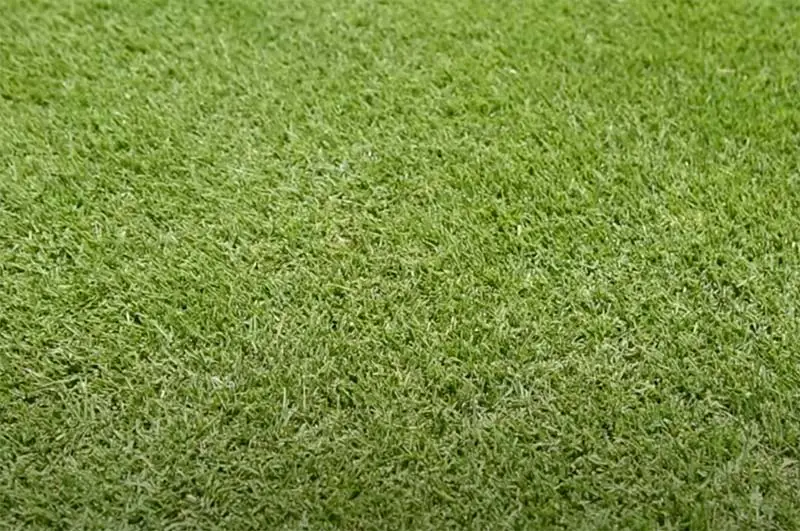
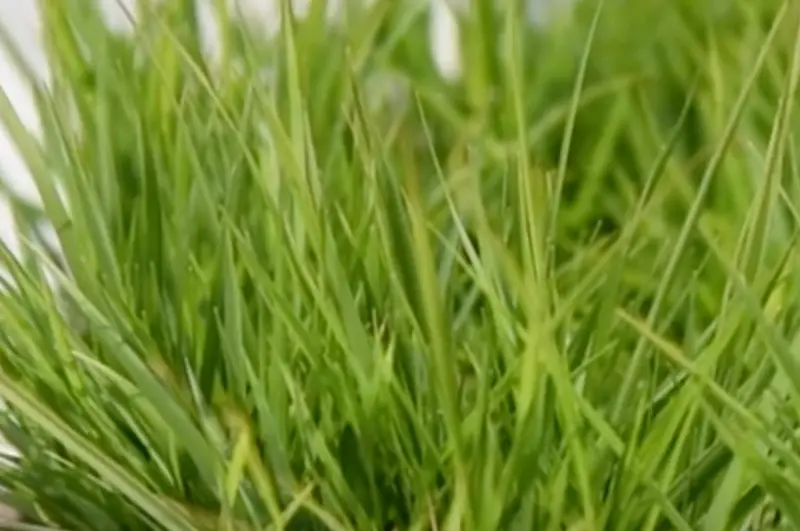
As far as the different warm-season grasses go, Zoysia grass is one of the most versatile. Due to its ability to grow in a variety of different climates, this type of warm-season grass is commonly found in regions in the transition zone. This grass is known to be lower maintenance than other types.
Like most warm-season grasses, Zoysia grass has a light to medium green color. The pointed blades are medium-sized. While this grass grows at a slower rate than others, it will be highly resistant to foot traffic. Furthermore, this grass will handle drought and extreme heat very well!
Conclusion
There are two main types of grasses, namely cool- and warm-season grasses. However, in certain regions located in the so-called transition zone, it is possible to find either type. In order to identify your type of grass, it’s important to consider your climate.
You’ll also need to pay attention to how your grass grows: when does it thrive, and which conditions does it struggle to tolerate? By considering these aspects of your lawn, you’ll be able to identify your type and tailor your subsequent lawn care to your relevant type of grass.

